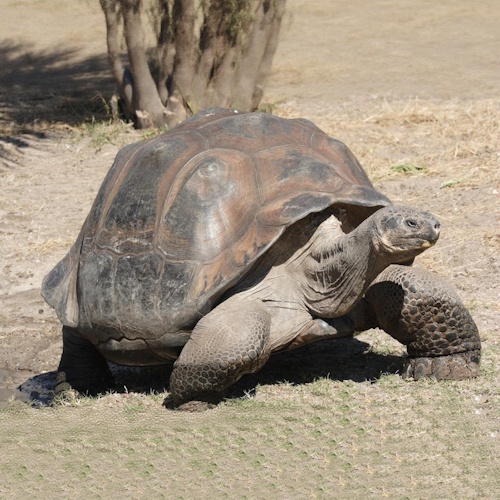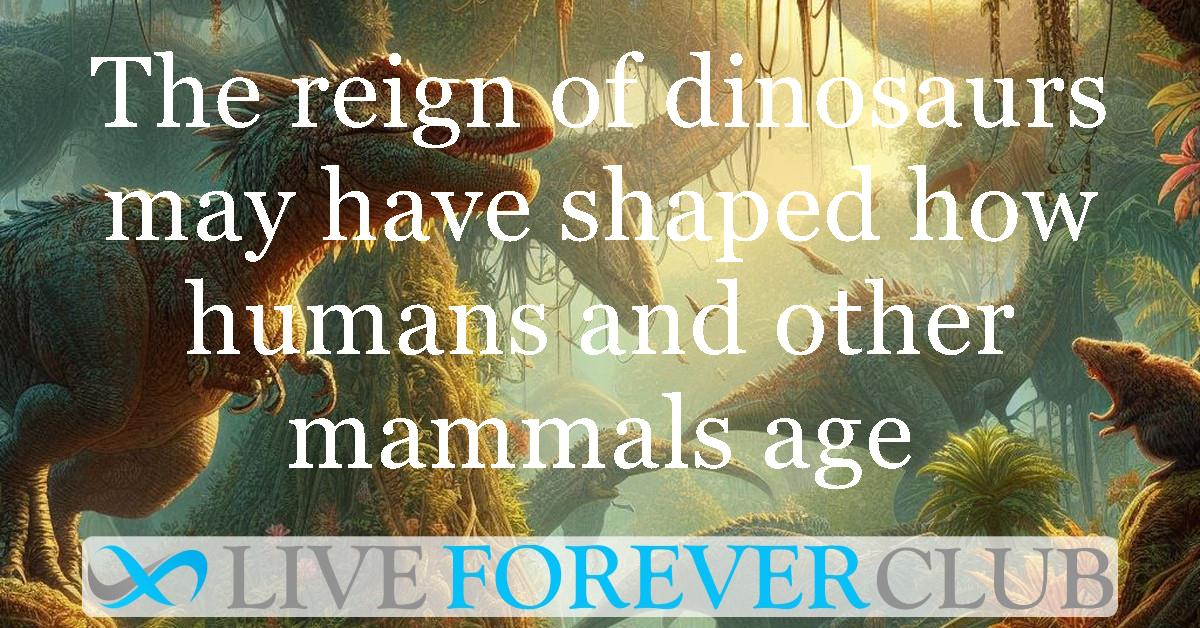For centuries, the enigma of ageing has captivated scientists and the general public alike. Why do some creatures age quickly while others scarcely seem to age at all? The research by João Pedro de Magalhães, a leading expert in the field of ageing, proposes a groundbreaking hypothesis that links the ageing processes of modern mammals, including humans, to the era of dinosaurs.
The Heart of the Hypothesis
At the core of de Magalhães' study is the 'Longevity Bottleneck Hypothesis.' This hypothesis suggests that the evolutionary journey of mammals during the reign of the dinosaurs has left a lasting mark on their ageing processes. While mammals show clear signs of ageing, some reptiles and amphibians exhibit very slow or even negligible ageing. The study posits that for over 100 million years, when dinosaurs dominated the Earth, mammals were mostly small, nocturnal, and short-lived. This prolonged evolutionary pressure for rapid reproduction may have led to the loss or inactivation of genes associated with longevity.
The research delves into the contrasting ageing phenotypes among different species. Mammals, including humans, often show a marked ageing process, whereas certain reptiles and amphibians display very slow ageing or an absence of ageing phenotypes altogether. For instance, numerous species of turtles exhibit negligible senescence – a phenomenon where an organism does not display symptoms of ageing. In contrast, no mammal species, including humans, shows such negligible senescence.
De Magalhães' hypothesis is supported by the observation that traits like limb regeneration and cancer resistance, common in reptiles and amphibians, are largely absent in mammals. This suggests that the evolutionary trajectory of mammals under the shadow of dinosaurs has significantly influenced their ageing mechanisms.
The paper references a study from the journal Science (2022) that provides a comparative analysis of ageing rates across various species. It highlights that while fast ageing species are found across different taxa, the slowest ageing species are invariably non-mammals. This stark contrast underscores the unique evolutionary path of mammals and its impact on their longevity.
From Dinosaurs to Mammals
The Dawn of Mammalian Ancestors
Our story begins over 300 million years ago, with the emergence of synapsids, the earliest ancestors of mammals. These creatures, resembling a cross between lizards and mammals, roamed the Earth during the late Carboniferous and early Permian periods. They were distinct from the lineage that would evolve into reptiles and, eventually, dinosaurs. Synapsids, including the famous Dimetrodon with its iconic sail-like spine, were among the dominant terrestrial vertebrates of their time.
Rise of the Dinosaurs
Fast forward to the late Triassic period, around 230 million years ago, a pivotal chapter unfolds with the rise of the dinosaurs. This era marked the decline of the synapsids and the ascent of dinosaurs as the dominant terrestrial vertebrates. Dinosaurs, with their diverse range of sizes, shapes, and ecological niches, reigned supreme for over 160 million years, profoundly influencing the evolutionary trajectory of other species, including the early mammals.
Mammals Under the Shadow
During the age of dinosaurs, mammals were forced to adapt to a world dominated by these colossal creatures. Early mammals were small, often the size of a modern mouse, and predominantly nocturnal. This lifestyle was likely a strategic adaptation to avoid predation and competition with the dinosaurs. Their small size and nocturnal habits meant that early mammals had limited resources and ecological niches available to them. This had profound implications for their evolutionary development, particularly in terms of lifespan and reproductive strategies.
The Longevity Bottleneck
In a world ruled by dinosaurs, the evolutionary pressure on these early mammals was intense. With the constant threat of predation and a competitive environment, the priority for these mammals was to reproduce quickly and efficiently. There was little evolutionary advantage in longevity; the key was to pass on genes to the next generation as rapidly as possible. This 'longevity bottleneck' meant that traits associated with long life, such as slow ageing and robust repair mechanisms, were not selected for in these early mammals. This period could have been critical in shaping the ageing processes that we observe in modern mammals.
The Aftermath of the Dinosaurs' Extinction
The extinction event that wiped out the dinosaurs 66 million years ago marked a turning point. With the fall of these giants, mammals were presented with a plethora of ecological niches to explore and inhabit. This led to an explosion in mammalian diversity and size. From the ashes of the dinosaur-dominated world rose the age of mammals - a time when mammals diversified and evolved into the myriad forms we see today, from the tiniest shrews to the largest whales.
Legacy of the Dinosaur Era
The evolutionary history of mammals, shadowed by the reign of dinosaurs, has left an indelible mark on their biology, particularly in ageing and longevity. The constraints of the dinosaur era, where rapid reproduction was favored over longevity, may explain why no mammal species, including humans, exhibits the negligible senescence seen in some reptiles and amphibians. This fascinating link between our distant past and our current biological traits not only illuminates the path of mammalian evolution but also offers insights into the complex mechanisms of ageing.
Implications and Future Directions
The Longevity Bottleneck Hypothesis offers a compelling explanation for certain mammalian ageing traits, like reproductive senescence and tooth erosion. It raises intriguing questions about the role of historical predation and ecological constraints in shaping the ageing processes of various species.
Future studies are essential to investigate further the loss or inactivation of repair, defense, or regeneration systems in mammals. With the advancement in genome sequencing, testing this hypothesis through evolutionary genomics becomes a plausible and exciting next step.
Caveats and Considerations
While the hypothesis is robust, the study acknowledges potential contributors to the differences in ageing, such as body temperature and metabolic rates. The higher body temperature of mammals, for instance, might contribute to their faster ageing compared to reptiles and amphibians. The study also speculates that cancer might be more frequent in mammals, influencing their ageing process. These considerations point towards the complex and multifaceted nature of ageing.
Conclusion
The Longevity Bottleneck Hypothesis opens new avenues in our understanding of the ageing process. It not only provides a historical perspective on the evolution of ageing but also lays the groundwork for future research in the field.
Acknowledgements
The research was conducted by João Pedro de Magalhães at the University of Birmingham's Genomics of Ageing and Rejuvenation Lab, Institute of Inflammation and Ageing. The study was supported by grants from the Wellcome Trust Longevity Impetus Grants, LongeCity, and the Biotechnology and Biological Sciences Research Council. The findings were published in the journal BioEssays.







